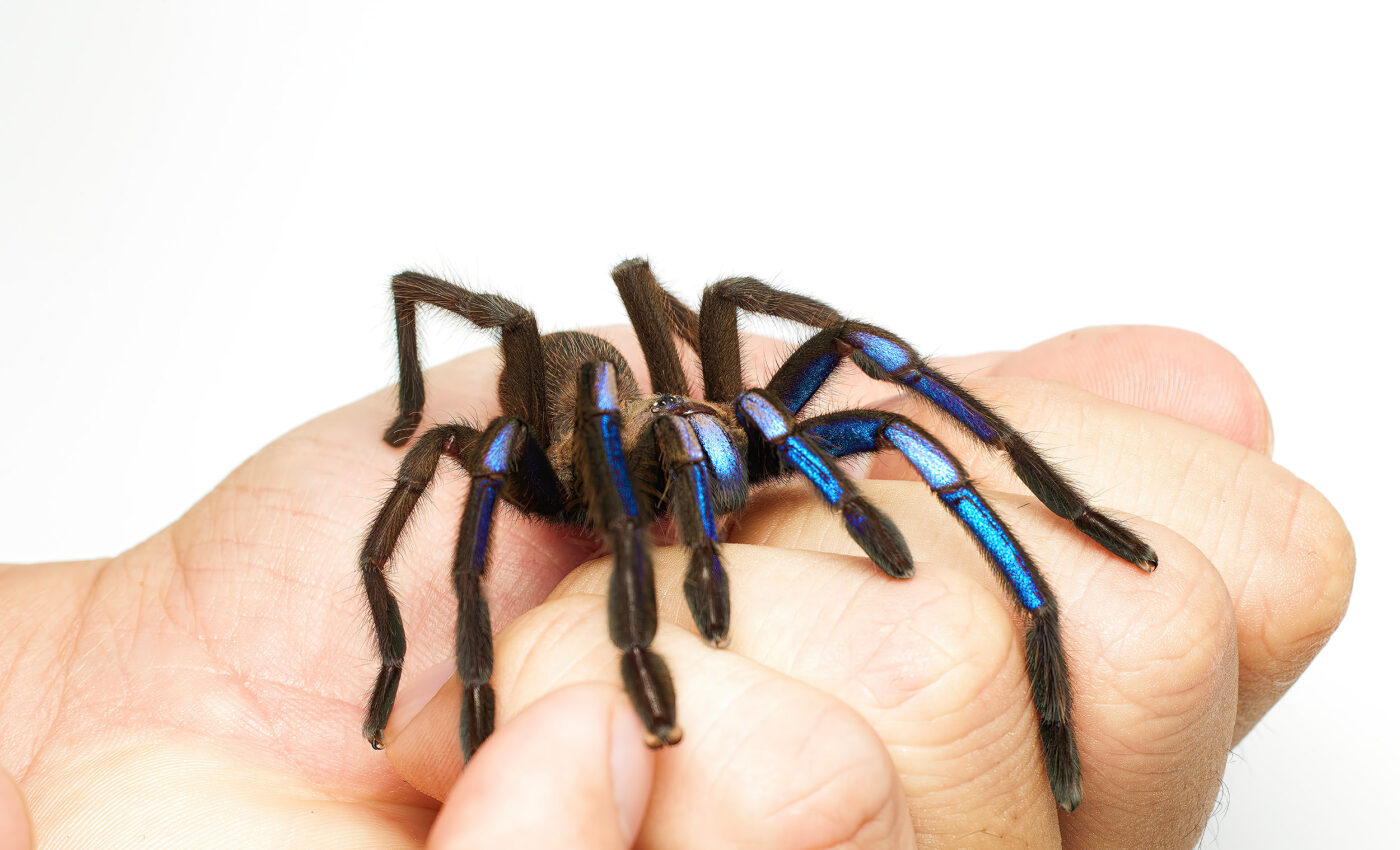
Electric blue tarantula discovered in a Thai mangrove forest
Researchers unearthed a new species of tarantula exhibiting a vibrant electric blue coloration, nestled within the enigmatic landscapes of Thailand’s mangrove forests. This exciting discovery unfolded in the Phang-Nga province and is the inaugural record of a tarantula species dwelling in Thai mangrove ecosystems.
Dr. Narin Chomphuphuang and his research ensemble, accompanied by local wildlife aficionado and YouTuber JoCho Sippawat, embarked on this trailblazing expedition following the revelation of Taksinus bambus — the first tarantula known to inhabit bamboo stalks, in Thailand. Their quest was driven by the zeal to delve deeper into the secretive world of these arachnids.
Encounter with the vibrant creature
The distinctive electric blue of the tarantula immediately distinguished it from its peers, its color acting as a beacon in the dense, dark green foliage.
Narin explained, “The first specimen we found was on a tree in the mangrove forest. These tarantulas inhabit hollow trees, presenting a challenge in catching them, as one needs to climb trees and lure them out of complex hollows amidst humid and slippery conditions.”
The expedition meticulously maneuvered through the terrain in the evenings and nocturnal hours during low tide, overcoming obstacles to collect two specimens, showcasing the tarantula’s elusive nature.
A symphony of colors
The electric blue tarantula, it was discovered, doesn’t owe its striking coloration to pigments, but rather to the intricate nanostructures within their hair, manipulating light to craft the illustrious blue hue, sometimes revealing an enchanting violet tint, creating a mesmerizing iridescent effect.
The mechanism to appear blue necessitates the absorption of minimal energy while reflecting high-energy blue light, making blue one of the most scarce and fascinating colors in nature.
A prior commercial appearance
Before its scientific documentation, this species had been seen in commercial tarantula markets as the “Chilobrachys sp. Electric Blue Tarantula,” however, without any records of its distinctive attributes or its natural surroundings.
Dr. Narin elucidated the adaptability of the electric blue tarantula, explaining, “These tarantulas can flourish in both arboreal and terrestrial environments in evergreen forests but are confined to tree hollows in mangrove forests due to tidal activities.”
Naming the new tarantula species
The scientific designation, Chilobrachys natanicharum, resulted from an auction campaign, with Nichada Properties Co., Ltd., Thailand, emerging victorious, proposing a blend of the names of company executives Mr. Natakorn Changrew and Ms. Nichada Changrew.
The proceeds from the auction have been channeled to bolster the education of Lahu children in Thailand and to aid impoverished cancer patients. The Lahu people, an indigenous tribe known for their rich culture and traditions, face stark educational disparities due to financial constraints.
Similarly, many cancer sufferers grapple with economic adversities, hindering their access to quality medical care. The donation aims to bridge these gaps and extend support to those in dire need.
Concerns over habitat destruction
Dr. Narin emphasized the indispensability of taxonomy in research, from resolving everyday queries about species names to undertaking pivotal conservation research to thwart species extinction. He underscored its critical role in advancing knowledge and fostering conservation efforts.
The looming menace of deforestation imperils mangrove forests and their unique inhabitants like the electric blue tarantula—one of the world’s rarest. This discovery brings forth pertinent questions about humanity’s inadvertent role in habitat destruction and the subsequent displacement of these exceptional species, prompting reflections on conservation imperatives.
This discovery, a beacon of Thailand’s rich biodiversity, has not only expanded the realms of arachnological knowledge but has also sparked crucial conversations about ecological conservation, habitat preservation, and the proactive roles that can be played to shield these extraordinary creatures from extinction.
The study was published in the journal ZooKeys.
—
Like what you read? Subscribe to our newsletter for engaging articles, exclusive content, and the latest updates.
—
Check us out on EarthSnap, a free app brought to you by Eric Ralls and Earth.com.













